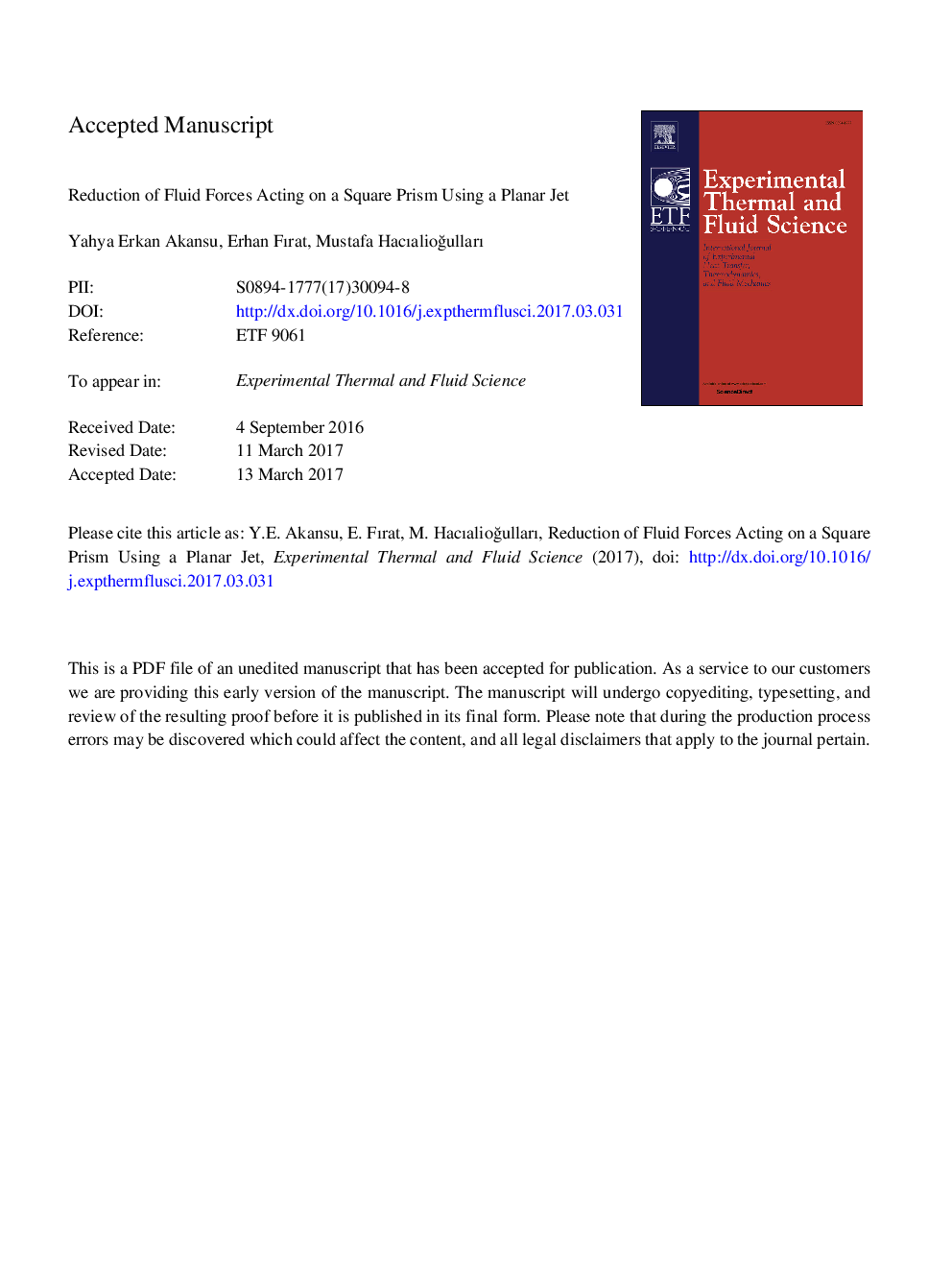| Article ID | Journal | Published Year | Pages | File Type |
|---|---|---|---|---|
| 4992482 | Experimental Thermal and Fluid Science | 2017 | 31 Pages |
Abstract
This experimental study focused on the concurrent minimization of the mean and fluctuating forces acting on a square prism in crossflow by creating a continuous jet through a narrow spanwise slot in it. For this purpose, three different predetermined injection surfaces (i.e., front, top, and rear) were individually studied for the injection ratios (IR) of 0, 1, 1.5, 2, 2.5, and 3 at a Reynolds number (Re) of 8000. The results showed that the rear jet is the optimum injection surface. For the rear jet configuration, the optimum IR is 1.5 in terms of mean total drag coefficient reduction, ãCDTã. In this case, the reductions in the ãCDTã and the level of root mean square (RMS) of fluctuating pressure coefficient (CP RMS) on the side surfaces are about 29.7% and 68%, respectively. However, the maximum reduction in the CP RMS level on the side surfaces occurred at IR = 2. In this case, the reductions in the ãCDTã and the level of CP RMS on the side surfaces are about 27.5% and 88%, respectively. The underlying mechanism of force reduction was also demonstrated. Various flow patterns were identified with respect to IR at incidence angle (α) of 0°. It was also proved that, at relatively small angles of incidence, from α = 0° to 20°, the active flow control method is still effective in reducing ãCDTã and in suppressing the fluctuating side forces, which is indicative of periodic vortex shedding from either side of the square prism.
Related Topics
Physical Sciences and Engineering
Chemical Engineering
Fluid Flow and Transfer Processes
Authors
Yahya Erkan Akansu, Erhan Fırat, Mustafa HacıalioÄulları,
